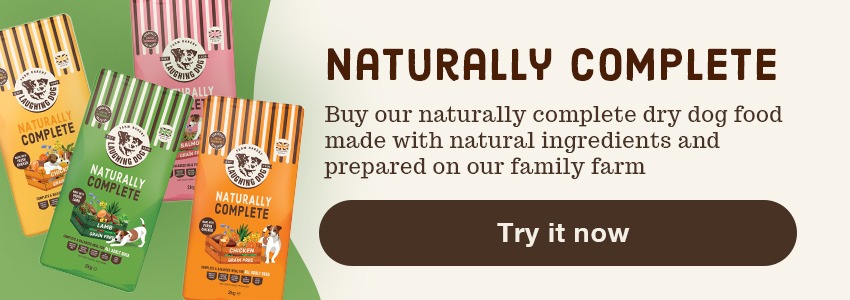
While the information can be confusing for a new paw parent, there is good reason for the broad scale of different food guidelines available.
This is due to the numerous factors that determine how much dry food you should feed your dog. These factors include the weight, age, type of food and activity levels of the dog. Therefore, it is difficult to say that all dog’s aged 2; for example, should be given X amount of food or all dog’s aged 7 should be given Y amount of food.
Food is a very important factor in a dog’s life.
Through their diet, they get everything their body needs to produce energy. They gain nutrients to keep every cellular process going and keep them healthy whilst providing them with a long and fulfilled life. The choice of dog food available is a myriad and it often comes down to the personal choice of the owner. Some choose a home-cooked diet and simply feed their dog fresh meat and vegetables and any other kitchen leftovers. While others choose a dedicated wet or dry dog food.
Of course, some dogs also need a particular special diet, for example, hypoallergenic dog food, grain-free dog food or wheat-free dog food and some paw-parents simply choose some of these gentler options such as grain-free or wheat-free dog food to help support their dog’s well-being.
So, before we can decipher “how much dry dog food should I feed my dog” you need to know the following factors… What is your dog’s weight, your dog’s age and what is your dog’s chosen food?
We are exploring how much dry food you should feed your dog. But this can also still be factored down to whether you are feeding them a pure dry dog food diet or whether you are mixing in wet, fresh, or raw food into the diet as well.
If you are feeding your dog dry dog food as the only source of food and not mixing it in with any other contents, it is much easier to determine the levels of feeding. All dog food manufacturers must adhere to UK labelling guidelines and the label is the best place to look for information on how much dry food to feed your dog.
The labels are usually broken down into a table and they display various factors; for example, if your dog is aged between 2 and 3 and then weighs between 10 and 20 kg, you basically just need to find the two columns which relate to your dog and then match it with the recommended feeding quantity.
There is of course always a level of flexibility within this and as a paw parent, you also need to understand your dog’s level of activity and their current weight. A dog that is deemed underweight will require between 10% and 20% more than the guidelines recommend, whereas a dog that is overweight or even obese will need to be taking in a smaller quantity than the guidelines recommend.
The illustration below is typically found on many dog feeding guidelines and gives a great representation of where your dog should be and how you can determine if they are underweight, ideal weight or overweight.
This is just another example of why the dog feeding guidelines are not always clear-cut as they may appear on packaging and it does take a little bit of interpretation and common sense to understand how much you should be feeding your dog.
Laughing Dog food dry feeding guidelines
Here at Laughing Dog, we try to keep our dry dog feeding guidelines as simple as possible. It is important to note that our dry dog foods and wet dog foods are complete and balanced – therefore you do not need to feed anything else with them.
While some dog food manufacturers look at the breed, age, and weight we sort our dog food differently. We offer puppy food which is available for puppies up to the age of around 48 weeks to one year.
From this point we recommend all paw parents move their dogs onto an adult dog food. Some brands of dog food offer senior dog food, but here at Laughing Dog we have carefully created our recipes to be nourishing for adult dogs of all ages, creating recipes for healthy digestion, immunity, joints, teeth and bones.
For our adult Laughing Dog dry foods, we have a very simple table to break down the guidelines which is purely based on your dog’s weight so if you know roughly how much they weigh within the brackets provided then you can get a clear picture of how much food you should be giving your dog. Here is an example of one of our dog feeding guidelines for our Naturally Complete Lamb Dry Dog Food.
| Breed Size | Grams per day |
| Small (5kg – 12kg) | 90g – 175g |
| Medium (12kg – 25kg) | 175g – 300g |
| Large (25kg – 45kg) | 300g – 470g |
| Giant (45kg – 70kg) | 470g + |
What should I do if I am mixing dry dog food and wet dog food?
Many paw parents choose to mix their dry dog food with another type of dog food or wet food for example. Many owners choose this option as their dogs do not drink enough water. Wet dog food does contain a higher quantity of water and therefore can help keep you dog more hydrated.
It does therefore make understanding dog feeding guidelines a little bit more difficult though as the packaging will only show the guidelines based on feeding purely dry dog food.
With this in mind, we always recommend working with percentages. For example, making a 50/50 split of dry dog food and wet dog food and looking at the feeding guidelines for each of your two chosen foods. If you choose the 50/50 split, you would typically be halving the amount of dry dog food from the guidelines and halving the amount of wet dog food from the guidelines.
Again, you will have to take external factors into consideration, for example, your dog’s level of activity. You can also judge the level of food well by keeping an eye on your dog’s figure as to whether they are staying at an ideal weight or if you feel they are gaining too much weight or losing too much weight and you can adjust their food intake accordingly.
How much dry food should I give my puppy?
At Laughing Dog, we keep our guides simple, here is an example of how many grams per day you should be feeding your puppy or dog:
| Breed Size | Up to 50% of adult weight (grams per day) | 50% to 80% of adult weight (grams per day) | 80% to 100% of adult weight (grams per day) |
| Small | 190g – 365g | 155g – 305g | 125g – 245g |
| Medium | 365g – 635g | 305g – 530g | 245g – 425g |
| Large | 635g – 985g | 530g – 825g | 425g – 655g |
| Giant | 985g + | 825g + | 655g + |
This is an example feeding guide, please check packaging specific to your chosen product as it is likely to vary!
Introduce Laughing Dog puppy complete food at around 6 weeks of age and continue feeding until your puppy reaches adult age. At this stage, a change to Laughing Dog adult complete is recommended. It is advisable to soak dry food for puppies under 12 weeks of age. When introducing Laughing Dog, do so gradually over a period of 7 days, increasing the proportion of food each day.
You can read more about feeding guidelines for puppies, including when to stop soaking puppy food in our informative puppy guide!
How to change my dog’s food?
If you decide to change your dog’s food, for example, you are switching from a puppy to an adult dog food this must be done over a slow period. Dog digestive systems need time to fully adjust to the new food. Introducing new foods too quickly can upset their system and make your dog unwell.
Laughing Dog Food recommend introducing a new food over a period of 7 days by mixing in small quantities with their regular food gradually increasing over the course of the 7 days. You may start with just substituting 20% of their diet on day one with the new food, gradually increasing as the week goes on. This will be a much gentler process on your dog’s tummy, and they are more likely to welcome the change of food.




